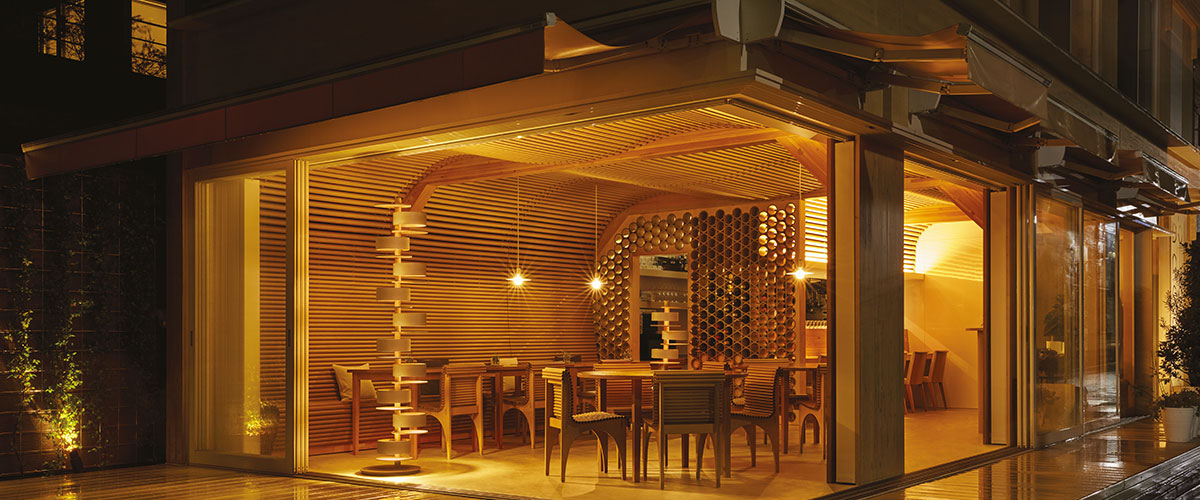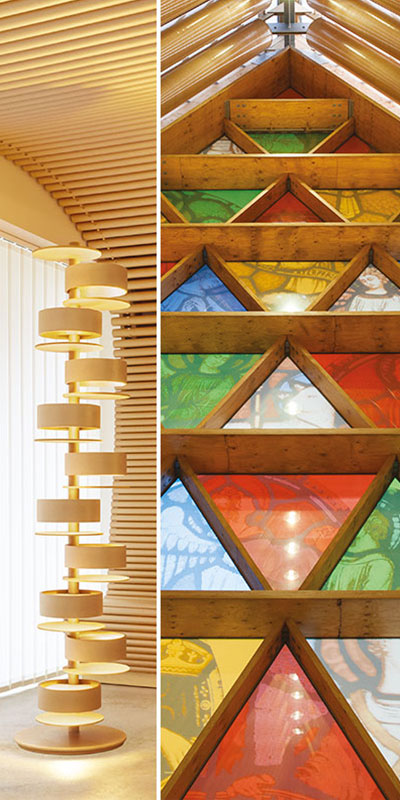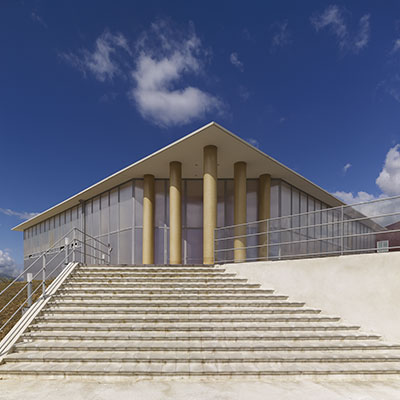ESSENTIAL ARCHITECT
A million miles away from feted "emphatic builder" architects, Shigeru Ban is very discreet for a winner of the Pritzker prize (fondly called the "Nobel Prize for Architure" - he won the 2014 editon).
Now a master in the design of innovative structures, he proposes projects in 100% recyclable organic materials.
Wood, paper, cardboard… a useful disruption in cities that are still too often ruled by an empire of steel and concrete.


Born in Tokyo in 1957, Shigeru Ban has always designed projects with the sensitive eye with which he observes his nearby world, that of the overpopulated Asian megacities. Inspired by traditional Japanese houses, with their modular paper partitions, he injects movement into spaces. He creates mobile, demountable, often ephemeral structures, open to the outdoors, highlighting a poetic notion of fluidity.
He designed the Japan Pavilion at Expo 2000 in Hanover, composed of recycled-paper tubes crowned by a ceiling of wooden arches. He has built numerous "emergency shelters" in Asia and Africa, from organic materials, either found on-site or recycled, to bring aid to victims of climate disasters or political refugees. In France, he designed the famous roof of the Centre Pompidou-Metz and partnered architect Jean de Gastines in the restoration of the Île Seguin, with its glowing new flagship "La Seine Musicale", a model of eco-friendly construction in the western suburbs of Paris.
As the planet groans and beseeches Homo economicus to reduce his environmental footprint, Shigeru Ban's buildings are endowing architecture with a virtuous, responsible and humanist logic. An "essential" architecture.

Interview with Shigeru Ban, Emergency architect
You've been called the "emergency architect". Do you agree with this nickname?
Shigeru Ban: The names people give me aren't important; it's what I do. I work on humanitarian architectural projects and I bring aid solutions in the wake of increasingly complex natural and human disasters.
How did you discover that cardboard could be used successfully in architecture? What are its main qualities?
S. B.: It all began in 1986, when I first used carton tubes for the staging of an exhibition dedicated to the designer Alvar Aalto. I didn't have a big enough budget to do the decor in wood. It was he who suggested carton tubes. I realized how solid the material was and started studying it. Today, it is indispensable when building temporary homes and bringing aid to countries hit by natural and human disasters like Haiti, Rwanda and Japan. The tubes are cheap, recyclable, easy to assemble and available across the globe. It's hard to find fault with them.
Don't they risk collapsing or being blown away in a storm?
S. B.: No. Tube structures are rigorously designed to guarantee stability and safety with the appropriate maintenance. They undergo special treatments to make them fireproof and waterproof.

Temporary but lasting. Is that compatible?
S. B.: Of course. Even a permanent building will fall into ruin if it's not loved. On the contrary, a temporary construction can become long-lasting if the occupants and population at large are proud of it. This happens with some of my designs, like the paper school in Chengdu, China, which has withstood a number of earthquakes over the past decade; and the Catholic church constructed in 1995 in Kobe, Japan; then bequeathed to Taiwan where it still stands today.


